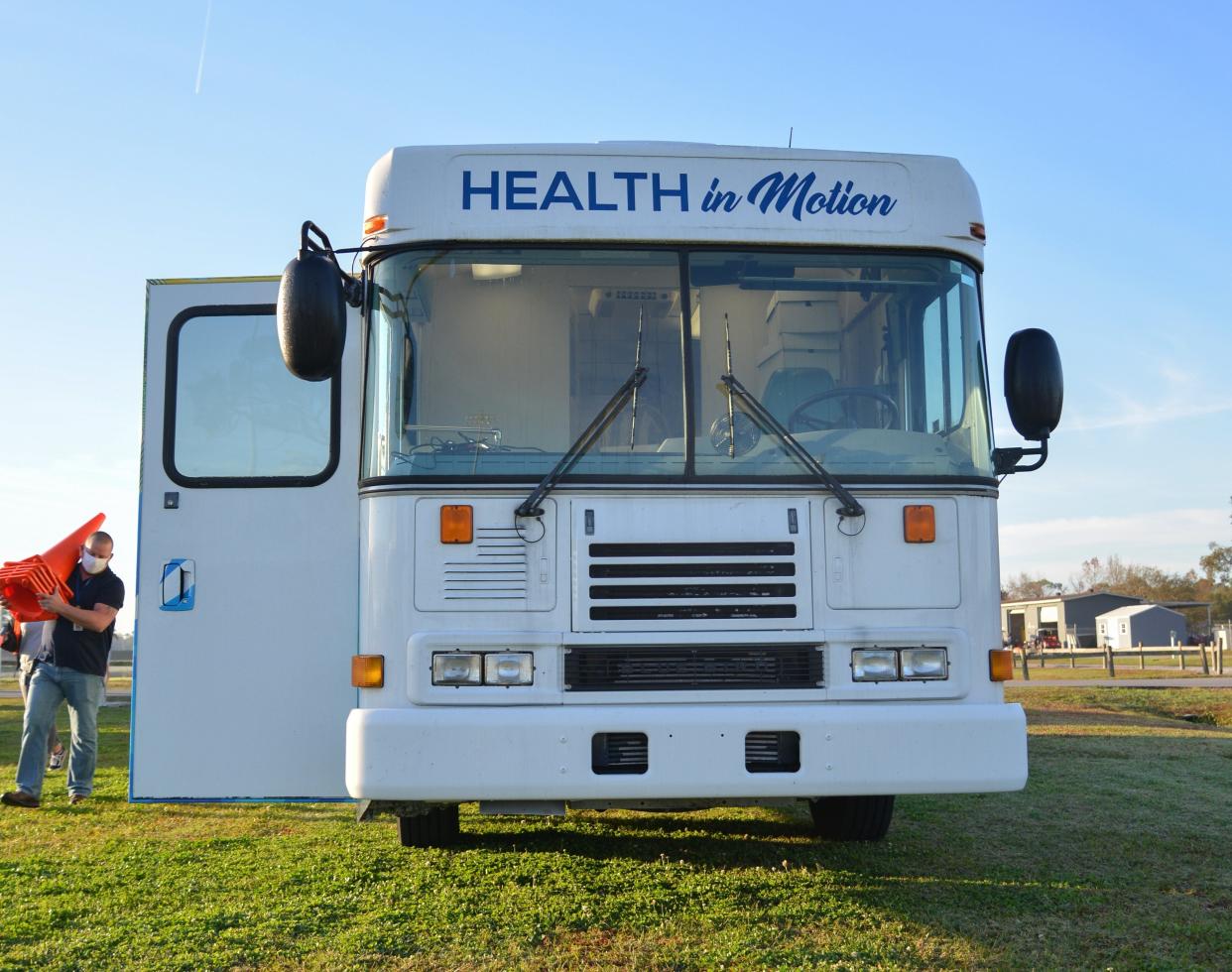Department of Health officials focus on fight against diabetes in Sarasota County

More than a year into a five-year plan that identifies diabetes as one of Sarasota County’s top medical concerns, local health authorities have laid the foundations for improvements in education, prevention and treatment in key county hotspots.
Among the components of the Sarasota County Department of Health’s Health Equity Plan are descriptions on the seriousness of diabetes, who it most affects, the condition’s contributing factors and recommendations on how to better treat patients and reduce the rate of new cases.
Health disparity data in the county identified HIV, diabetes and asthma as the top three local medical concerns. HIV and diabetes were determined as the top two for the Health Equity Taskforce to act upon, but diabetes was singled out for action as it affects some of the county’s most vulnerable populations.
“This decision was based on looking at the data and identifying where those kinds of gaps in access to care were,” said DOH minority health liaison and health educator Stephanie Seiffert, “and then looking at trends among different priority populations and kind of seeing who was experiencing what type of disparities.”
Such studies and plans are required by state law to narrow the health disparities within Florida counties. Sarasota County’s DOH works with government and community nonprofit agencies to guide and support them in addressing these disparities.
“The Department of Health is not responsible for implementing all the objectives. Our role in this plan is to be a facilitator, whether that be bringing everyone together, you know, including the funders to the table to talk about how we’re going to fund these projects,” Seiffert said. “We fill in the gaps where we can, you know, and we received grant funds for the Health Equity Plan, and we fill in the gaps where we can purchase supplies and equipment for different initiatives.”
Data from 2019 reports that 10.2% of Sarasota County adults indicated they had been diagnosed with diabetes, with highest rates appearing in those over 65, non-Hispanic Black residents, and Hispanic residents. The county’s age-adjusted rate for deaths from diabetes in 2020 was 13.4 per 100,000, but for Black residents it was 36.7.
A U.S. Census tract in Venice bordered by Albee Farm Road and East Venice Avenue, bisected by Tamiami Trail, had the highest diabetes-related death rate at 113.5 per 100,000 residents between 2015-19. A neighborhood west of North Port along the Myakka River was second at 100.6 and Newtown in Sarasota was third at 90.4.
“We know that, historically, minorities have lower high school graduation rates and therefore lower educational attainment rates, and so we think that factors like these contribute to people being able to access services,” Seiffert said. “All of those socioeconomic barriers that impact health outcomes, language barriers, access to technology, all those things ... that’s something that this plan works to address.”
Identifying and addressing these disparities is why the Health Equity Plan was created and recommends actions such as increasing the presence and services of the DOH’s Mobile Medical Unit, which has been outfitted with a new machine that measures levels of hemoglobin A1C, a key diabetes metric, and other tools to help in diabetes screenings, according to Seiffert. Efforts to reduce language barriers are also needed along with addressing the issue of Sarasota’s Newtown community being classified as a food desert by the U.S. Department of Agriculture.
More than 2.7 million Florida residents have diabetes, with an estimated 546,000 living with undiagnosed conditions. Nearly another 6 million adults in Florida have prediabetes, meaning their blood glucose levels are higher than normal but still lower than the threshold required for treatment.
Symptoms and warning signs
According to the American Diabetes Association, symptoms to be on the lookout for include frequent urination, extreme thirst, feeling hungry even when eating, extreme fatigue, blurry vision, slow healing cuts and bruises and more. A sign of type 1 diabetes is often losing weight despite eating more, and type 2 can be accompanied by tingling, pain or numbness in the hands and feet.
If left untreated, diabetes can increase the risks for other health complications, including cardiovascular disease, chronic kidney disease, vision loss, nerve damage, reduced circulation or limb loss, skin issues, gum disease, hearing loss, strokes and more. Diabetic ketoacidosis, caused by a surplus of ketones developed when the body breaks down fat for energy, is also a potential complication and is a life-threatening condition.
Linh Gordon, a registered nurse and diabetes care and education specialist at Sarasota Memorial Hospital, says that data from the Centers for Disease Control and Prevention indicates that one in three Americans will have diabetes by 2050. She says the most important thing people can do to prevent this is to get educated on the disease.

Gordon said that most insurance companies will cover the costs of up to 10 hours of education services in the first year, with an additional one or two hours each year after.
As for other medical expenditures, the ADA’s 2022 Economic Costs of Diabetes report shows that annual medical expenditures for those with diabetes are 2.6 times higher than compared to people of similar age and sex without diabetes. Those with diabetes spent on average $19,736 on medical expenses each year while those without spent an average of $7,714.
The report also notes that, adjusted for inflation, the overall direct medical cost of diabetes had increased 7% from 2017-2022, and the cost of insulin increased 24% in the same time span.
What are the types of diabetes?
Diabetes is a chronic health condition that affects how food is converted into energy.
Type 1, making up 5-10% of diagnoses, is caused by an autoimmune reaction that keeps sufficient amounts of insulin from being formed naturally. Type 2 makes up 90-95% of cases and occurs when the body does not utilize insulin well and blood sugar levels are unstable.
Gestational diabetes develops in pregnant women who have never had diabetes and can place babies at a higher risk for health problems. While it usually goes away after birth, it can convert to type 2 diabetes later in life.
“The food essentially is not going all the way into the cell. It’s staying in the bloodstream, and that’s where you can have issues, and there are many causes of this blocking [of insulin],” Gordon said. “They don’t know the exact reason why there’s so many people, but a lot of the risk factors are weight gain, and obviously, in our country, our food sources, our stress levels, there’s so many risk factors.”
Poor sleep habits and a sedentary lifestyle are also frequent causes, so Gordon said that the best way to prevent or manage diabetes typically involves healthy eating, weight loss and exercise. Working with a doctor to determine a care plan and any necessary medications is also recommended.
Sarasota Memorial Hospital’s Diabetes Treatment Services program offers diabetes education along with individual consultations and disease management help. A referral is usually required, but those needing care can call 941-917-7468 for assistance.
To learn more about the Sarasota County Department of Health’s Health Equity Plan, visit sarasota.floridahealth.gov/programs-and-services/community-health-planning-and-statistics/index.html.
Sarah Owens is a reporter for the Community News Collaborative. Connect with her at slowens@cncfl.org.
This article originally appeared on Sarasota Herald-Tribune: Sarasota County health officials sharpen focus on fight against diabetes

